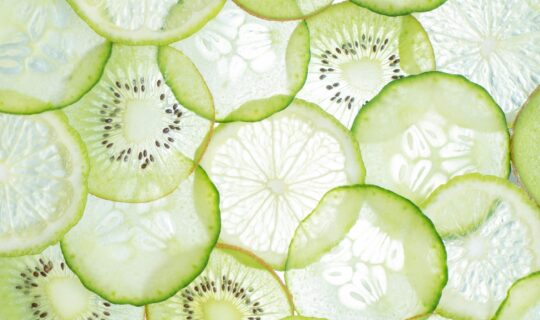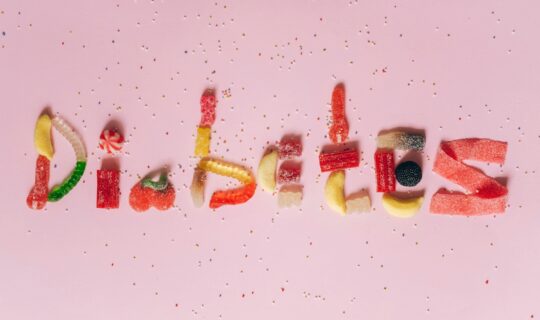If you’ve ever typed “how can I lose weight?” or “best diet to lose weight” into a search engine, you’ve likely come across countless answers—some helpful, some downright confusing or wrong. As a qualified nutritionist, I want to help cut through the noise by addressing common food and weight loss myths that may be holding…
What do nails say about your health?
by Lucia Stansbie
When seeing my clients, I always ask them to describe or show me their nails – and I know I am not the only therapist doing that. Ever wondered why? The reason is that nails (shape, colour, quality) can give indications and clues about general health status, providing an extra tool to spot possible unbalances or deficiencies that happened in the last four to six months (average growing time from cuticle to free edge).
It’s important to note that observing nails can give an indication or a hint, not a definitive answer or diagnosis; more in-depth tests need to be carried out to confirm any potential pathology and nutrient deficiency.
NAIL SHAPE
Clubbed nails – severely increased nail fold convexity – can make nails almost look like a drumstick. This could be an indication of pulmonary or cardiovascular pathology.
Spoon nails – increasing nail fold concavity. This could be an indication of iron deficiency, type 2 diabetes, lupus and protein deficiency.
Beau’s lines – like a furrow across the nail. Those indicate an interruption of nail growth at the matrix at a certain point when there might have been an acute illness/infection or trauma such as surgery or intense drug therapy. The deeper the line, the more severe the illness/trauma.
Vertical ridges – also called onychorrhexis. Those can be due to ageing, but could also be associated with lichen planus (an autoimmune rush that can affect different mucosa and areas of your skin) and rheumatoid arthritis.
Deep vertical central ridge – it might indicate iron, protein, and folate deficiency.
Vertical middle split resembling a fir tree – also known as median canaliform dystrophy of Heller. This is very rare and can usually be seen on thumbs and it could be due to an adverse reaction to some drugs used to treat acne and eczema.
MARKS, SPOTS & COLOUR
No moons – also called lunula. If absent from the thumbs, this can be a sign of anaemia or poor nutrient absorption.
Pale blue or red discolouration lunula – pale blue moons could be indicative of diabetes mellitus or anaemia, while discoloured red moons could suggest cardiovascular disease.
White spots – white spots like paint droplets on the nail bed can be indicative of calcium or zinc deficiency.
Horizontal milky stripes – also known as Mee’s lines. Those can indicate acute illness or a time when the body was under intense physical stress that caused a temporary nutrient depletion, for example running a marathon, undergoing surgery or pregnancy. Like Beau’s lines, the time of the event can be determined by the line location.
Darker/brown band on the nail tip – known as Terry’s nails. This could suggest renal or liver disease or diabetes.
White nails – if nails are all white, this could be linked to anaemia, cardiovascular conditions, oedema (build-up of fluid in the body which causes the affected tissue to become swollen), cirrhosis or renal failure.
Pink or red nails – if dark red could be an indication of polycythaemia (high concentration of red blood cells in your blood) or lupus.
Brown/grey nail but no thickening – this could be suggestive of cardiovascular disease, diabetes mellitus, vitamin B12 deficiency or lichen planus.
NAIL QUALITY
Thin brittle nails – might indicate low bone density (especially in post-menopausal women), thyroid disorders, mineral deficiency and low vitamin B12 status.
Nail pitting – like little dotty dents all over the nail. This could be caused by the inflammation of the nail matrix due to psoriasis, eczema, alopecia areata or lichen planus.
Nail beading – like wax dripped down the nail. This can be associated with vitamin B’s deficiency and endocrine conditions such as diabetes mellitus, thyroid disorders and Addison’s disease (an adrenal glands disorder).
Thick nails – this might be due to ageing, but in younger people can indicate a fungal infection, chronic eczema and psoriasis.
Nail separating from nail bed – also known as onycholysis. This appears as the free edge of the nail starts in the middle of the nail bed. It can be an indication of thyroid pathologies (hyperthyroidism), psoriasis, nail trauma, contact dermatitis and eczema.
Check your nails and refer to a professional (you can contact a nutritionist or GP) if you notice something unusual that you believe might be worth investigating.



